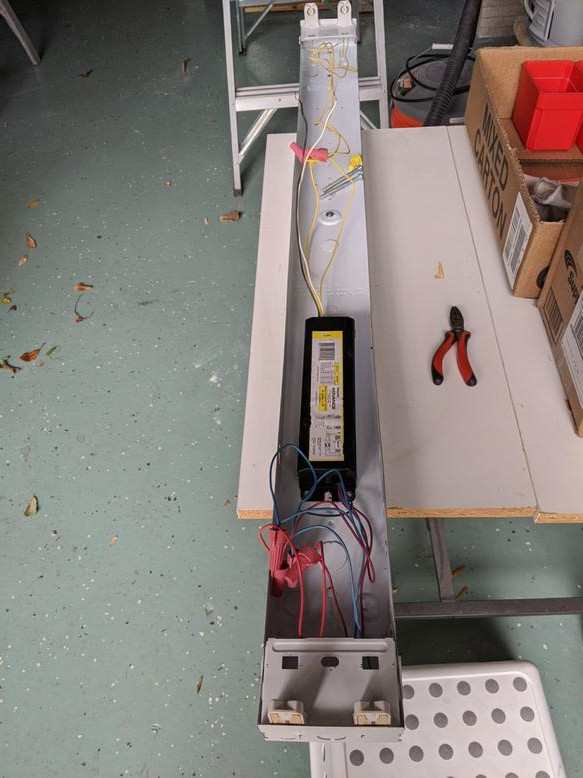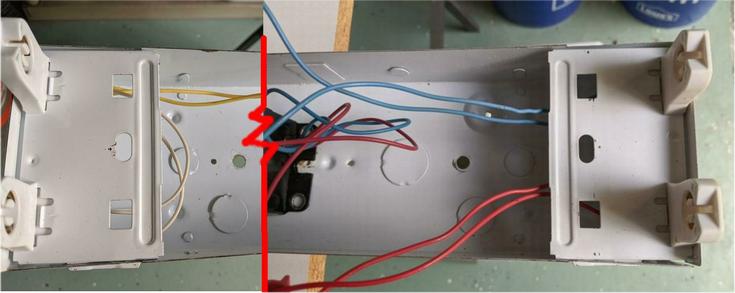I have a standard fluorescent light fixture in the garage that takes two 48" tubes. It has a bad ballast. I removed it from the 12' high ceiling already.
![Image]()
I am trying to decide between three options:
(1) throw it away and get a new LED fixture instead.
(2) replace the ballast. It is a R-2S40-1-TP ballast.
![Image]()
(3) I understand that I can remove the ballast altogether and just use regular 48" LED tubes. However I am not sure how the wiring would need to be modified. This is a picture of both sides of the fixture. On the left side I have two yellow conductors coming out to the ballast, and on the right side, I have two blue conductors, and two red conductors. The switched hot and neutral are connected to the ballast. How would I remove and bypass the ballast?
![Image]()
I am leaning against replacing the ballast since a new ballast is about as expensive as a new fixture probably.

I am trying to decide between three options:
(1) throw it away and get a new LED fixture instead.
(2) replace the ballast. It is a R-2S40-1-TP ballast.

(3) I understand that I can remove the ballast altogether and just use regular 48" LED tubes. However I am not sure how the wiring would need to be modified. This is a picture of both sides of the fixture. On the left side I have two yellow conductors coming out to the ballast, and on the right side, I have two blue conductors, and two red conductors. The switched hot and neutral are connected to the ballast. How would I remove and bypass the ballast?

I am leaning against replacing the ballast since a new ballast is about as expensive as a new fixture probably.





